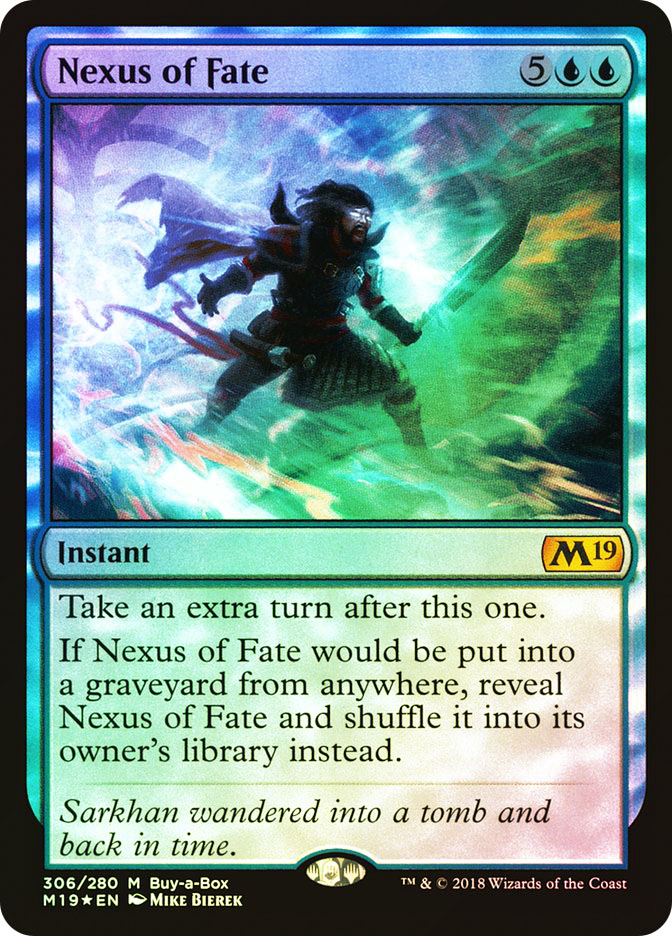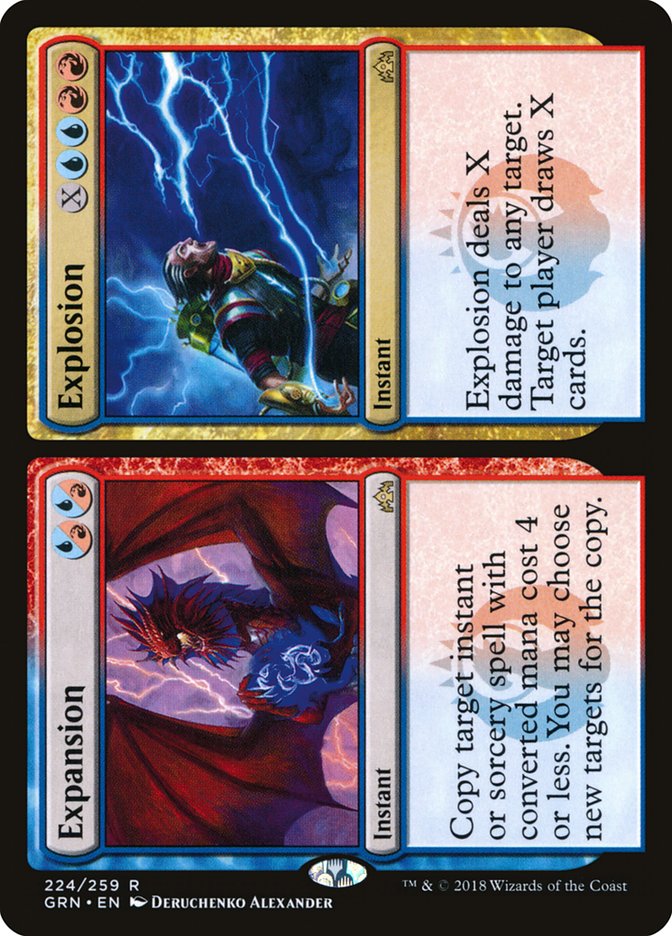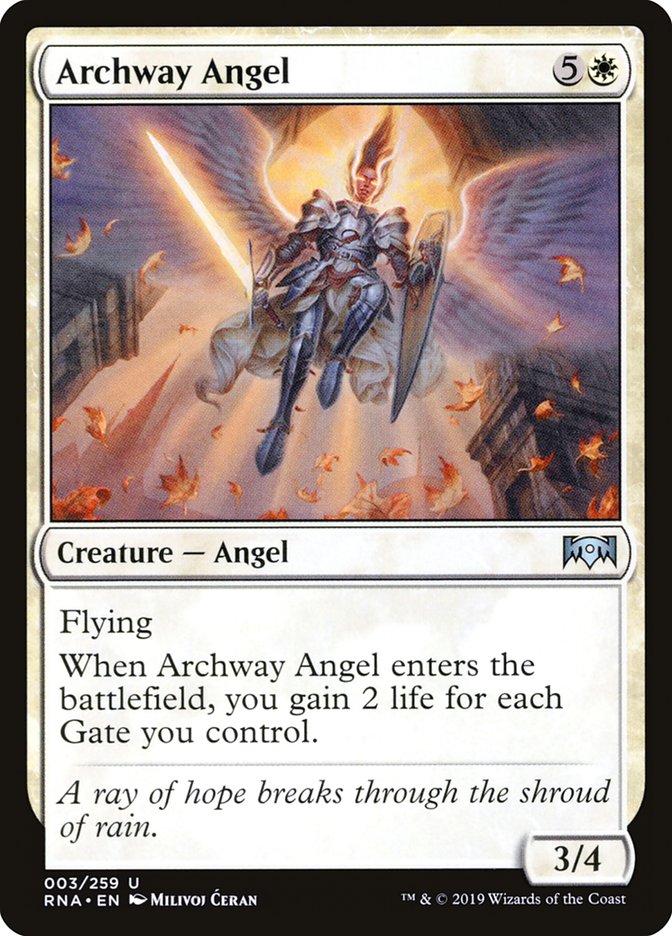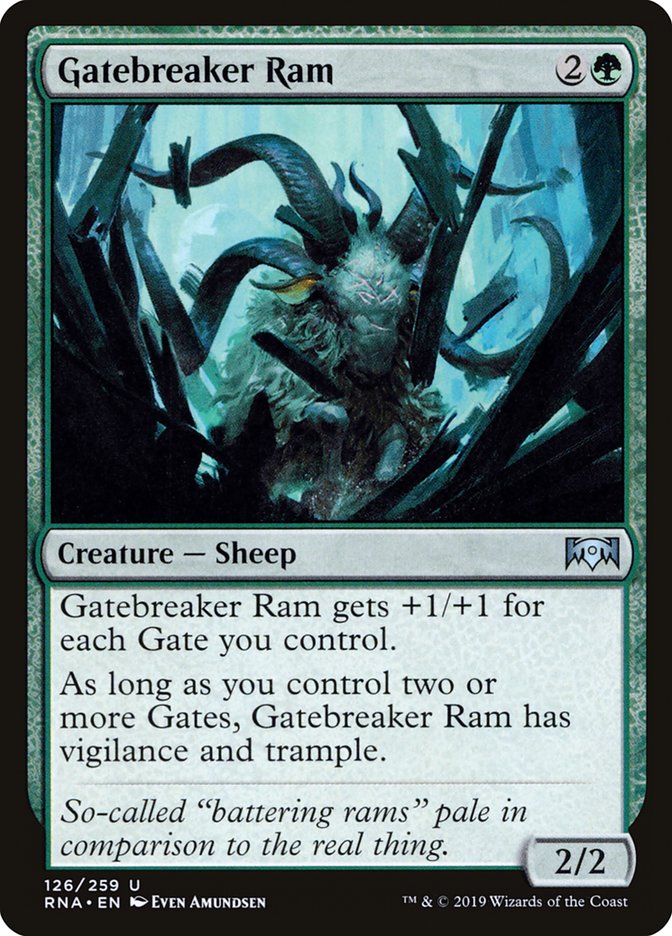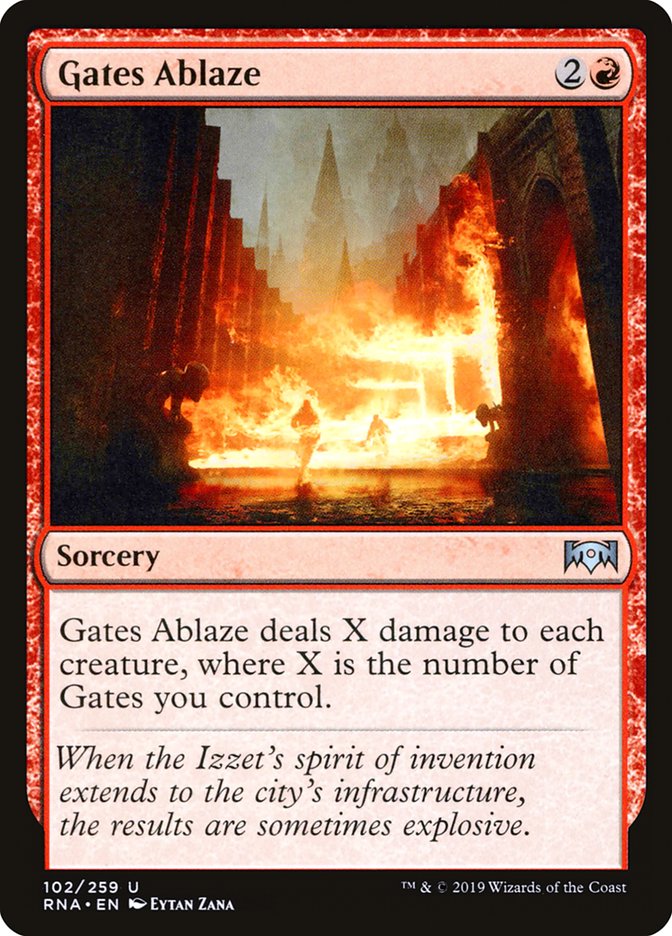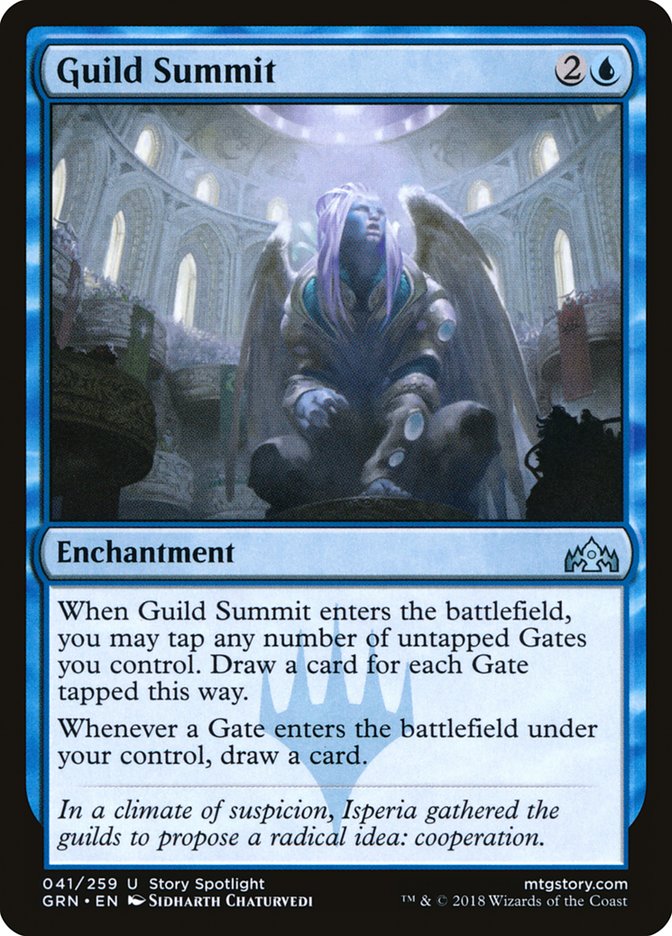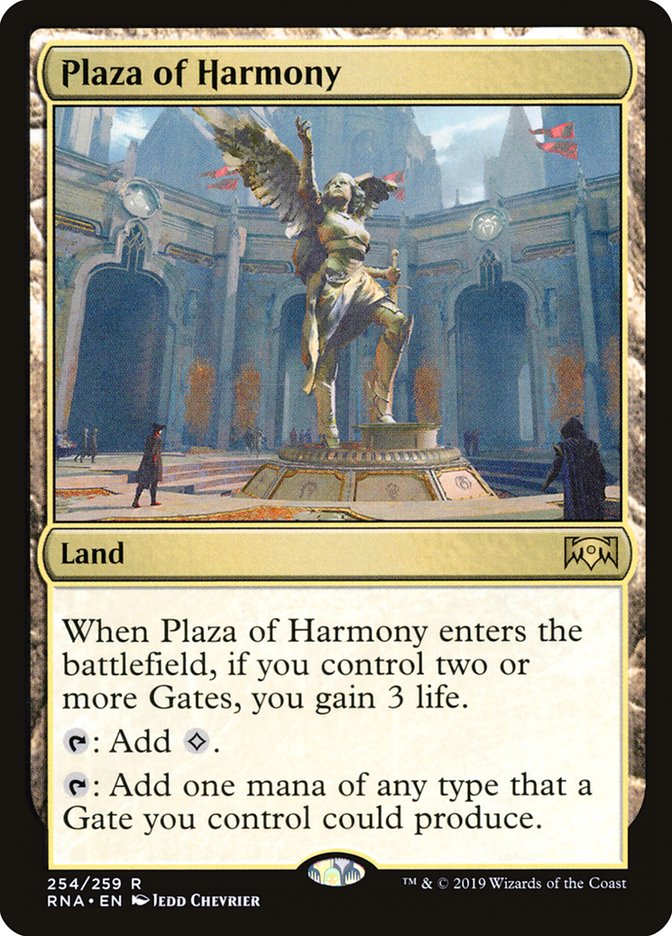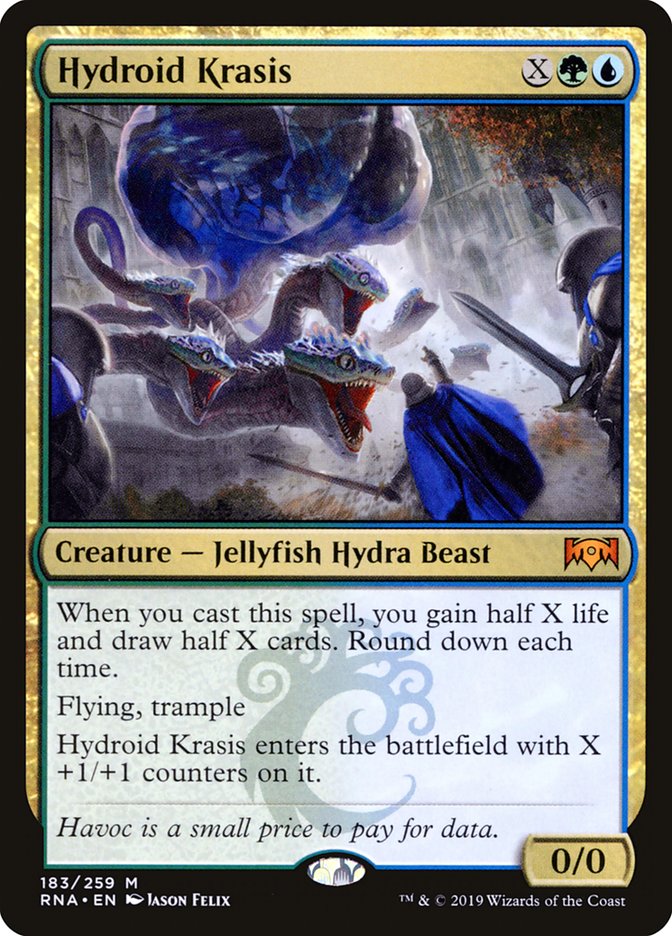Regular participants of the SCG Tour have been in a for a treat for the
first few weeks since Ravnica Allegiance’s release. With SCG
Indianapolis in the books already and SCG Dallas on the horizon, there’s
already been a ton of opportunity to play with the powerful cards from the
latest set in high stakes events.
As we head into SCG Dallas, players have significantly more of an idea of
what Standard is starting to look like. The format is still very much in
its infancy, and it remains to be seen if a new, broken deck lies lurking,
waiting to be found. As for myself, my attention has shifted very little
from where it was in the early days of testing for SCG Indianapolis. I’m a
firm believer that the broken deck of my dreams is right in front of my
face, and it’s all about building it correctly.
I am, once again, talking about Nexus of Fate.
On the Monday prior to SCG Indianapolis,
I covered what information I had
with limited testing and knowledge of the rest of the format as a whole,
casting a wide net in terms of what to expect heading into the first
weekend of the format. Now we have a lot more to work with, with an SCG
Open, a couple Standard Classics, and some data from Magic Online to figure
out where the format is starting to head to. I took this information back
with me into the lab to flesh out some philosophies and approaches towards
building Nexus of Fate decks moving forward.
As a baseline, the first thing I wanted to identify was a scale for how
all-in different decklists featuring Nexus of Fate were going and figure
out the strengths and weaknesses of each. Let’s start on the all-in end of
the axis and work our way back.
Lands (25)
Spells (35)
- 4 Anticipate
- 4 Gift of Paradise
- 3 Search for Azcanta
- 4 Uncomfortable Chill
- 4 Nexus of Fate
- 4 Chemister's Insight
- 4 Expansion
- 4 Growth Spiral
- 4 Wilderness Reclamation
Sideboard

The goal of this version of the deck is to utilize as fast of a combo kill
in the first game of the match as possible, then pivot much more in the
sideboard games to a different kind of deck. Against the midrange and
control decks, Niv-Mizzet, Parun serves as an excellent alternate win
condition.
The de facto midrange and control decks of Standard right now are Sultai
and Esper, respectively, and this sideboard makes a heavy nod to each. You
can alternate the deck into being much less combo centric and turn it more
into a midrange deck with a combo finish after sideboard, depending on what
you see fit. Lists like this typically don’t interact as much game 1, which
means that it’s on your deck to hum properly (and quicker than your
opponent’s) in order to steal the first game of the match.
In the list above, I went with a Temur manabase as opposed to a Bant one.
Bant utilizes Teferi and some slightly better sideboard options, especially
for the aggressive decks that can sometimes run you over before you’re able
to stabilize in favor of some velocity. Let’s shift there and take a look
at a slightly less all-in version, like my list from the Indianapolis Open
a week or so back:
Planeswalkers (3)
Lands (25)
Spells (32)
- 4 Gift of Paradise
- 3 Search for Azcanta
- 2 Revitalize
- 4 Nexus of Fate
- 4 Root Snare
- 4 Chemister's Insight
- 2 Expansion
- 4 Growth Spiral
- 1 Precognitive Perception
- 4 Wilderness Reclamation
Sideboard

This list maintains a faster gameplan in the first game. If it wasn’t
clear, Expansion//Explosion is very important at speeding you towards
looping Nexus of Fates in game 1, usually winning the game once you’ve
established the Nexus loop:
Expansion // Explosion does quite a bit in the Nexus deck. The front half
in Expansion is incredibly flexible and can lead to some powerful plays if
it copies the right spell at the right time. A lot of the time, it’s very
good at copying a counterspell to become a virtual copy of Negate to help
power through your important spells. If you’re Nexus-less but have an
untouched Wilderness Reclamation on the battlefield, you can use one of the
two copies to gas up on a ton of cards to help push you into the endgame
before you use the second copy to kill your opponent. This list attempts to
preserve the powerful white sideboard cards and use Teferi, Hero of
Dominaria as a midrange card advantage engine that quickly becomes a
problem if not answered. This list brings a tad bit more consistency to the
table in exchange for speed.
Another list that has been catching my eye is a list that fits still in the
more midrange role while keeping the Nexus of Fate combo as the centerpiece
of the deck:
Creatures (5)
Lands (23)
Spells (32)
- 4 Opt
- 2 Gift of Paradise
- 3 Search for Azcanta
- 3 Blink of an Eye
- 4 Nexus of Fate
- 4 Root Snare
- 2 Chemister's Insight
- 4 Growth Spiral
- 2 Precognitive Perception
- 4 Wilderness Reclamation
Sideboard

From my understanding, this deck is the work of a group of individuals
dubbed the Weekend Warriors, a small team trying to make their name on the
SCG Tour. I admire the work this group has put into this list, as a good
amount of thought seems to have gone into the it. The maindeck still plays
a series of “stepping stone” cards to facilitate card draw and mana ramp,
and even attacks from a rarely seen angle with a miser’s copy of Murmuring
Mystic as both a win condition and defensive option. Hydroid Krasis makes
an appearance as well in the maindeck rather than a sideboard plan. Krasis
is often a fantastic topdeck when you run out of card draw spells and start
to run out of things to do as the game approaches its conclusion, and I
imagine it can steal some games on its own without the help of Nexus of
Fate.
This is a list I have had little personal experience with, but I imagine
the slightly smoother mana in conjunction with more pointed interaction,
like Blink of an Eye, work well. A part of me wants to maybe try
experimenting with an extra copy or two of Murmuring Mystic since it’s very
strong in some of the Nexus decks’ more problematic matchups, like Mono-Red
and the white aggressive decks.
The next list I want to cover is a list that pushes almost as far away from
the all-in aspect of Nexus of Fate decks as they can possibly go.
Incidentally, it’s the most interesting take on the archetype, and has the
most to talk about.
I am, of course, talking about Nexus of Gates!
Creatures (4)
Lands (26)
Spells (30)
- 4 Nexus of Fate
- 2 Deafening Clarion
- 4 Guild Summit
- 4 Expansion
- 4 Circuitous Route
- 4 Growth Spiral
- 4 Wilderness Reclamation
- 4 Gates Ablaze
Sideboard

First popularized by Bryan Gottlieb, this version of the deck is quickly
growing in popularity due to its much more difficult to attack gameplan.
Rather than focusing around Wilderness Reclamation, Nexus of Fate, and
potentially Teferi, the Gates-matter cards are all unique and very much
worth the payoff when utilized:
One aspect of the Gates version of Nexus decks that the other ones don’t
utilize as well is a maindeck sweeper. Gates Ablaze serves as a fantastic
catchup card to keep the battlefield in check, as it only costs three mana
and will typically take care of just about any creature due to how well the
card scales as you play more and more Guildgates. Only costing three mana
helps mitigate the fact that a lot of your lands enter the battlefield
tapped, and it’s not uncommon to be playing a turn behind on mana as a
result.
Archway Angel, Gatebreaker Ram, and to an extent Gate Colossus – which is
usually only seen in non-Nexus Gate decks – are all above rate creatures
for their mana cost and do an excellent job of winning the game for you.
Archway Angel, while costing six mana, usually gains you between ten to
twelve life per trigger when you resolve it, which lets you crawl back into
games against some of the more aggressive decks. Gatebreaker Ram is a
hilariously simplistic and powerful win condition that will usually
counteract your opponent’s sideboard plan of counterspells and hand
disruption to handle the Nexus of Fate engine.
The glue that really keeps this deck together, however, is Guild Summit.
Guild Summit serves many different purposes in the Gates deck. For
starters, it tends to overload your opponents on ways to handle both it and
Wilderness Reclamation, leaving them to die to one or the other burying
them in card and/or mana advantage. The fact that Guild Summit is flexible
in all phases of the game makes it a powerhouse, as you can cast it on turn
3 or 4 to start accruing a few extra cards here and there, or cast it late
as an enormous three-mana draw spell that can net you an entire new hand of
cards. Also, the enters the battlefield effect works incredibly well with Wilderness Reclamation to allow you to cast Nexus of Fates
during the end step that you found from the trigger.
Also, you haven’t lived until you cast a Circuitous Route to go get a
couple Guildgates with Guild Summit on the battlefield. It is a
deeeeeeeelight and even the win conditions have gone ahead and diversified
themselves a bit more than the usual Nexus decks:
Neither of these cards are new to Nexus decks in general, but here we see
Hydroid Krasis make a four-of-in-the-maindeck appearance as one of the ways
to grind opponents out with the cast trigger. Since Nexus of Gates goes a
little deeper on the ramp spells by also playing Circuitous Route alongside
Growth Spiral, it becomes a lot easier to cast huge Krasis much earlier
than other Nexus decks can.
In conclusion, if we tie everything together, we see that the Gates version
attacks on a much larger number of angles than the other Nexus decks, and
as a result, it ends up being much sturdier and difficult to attack,
especially in the sideboarded games.
I do, however, think that the deck’s biggest weakness is itself. Sometimes
you draw a whole boatload of Gates and die because you play a turn behind
the entire game, sometimes you’re short a color you need, and sometimes
since you operate so slowly in the early game, if your ramp spells or Guild
Summit don’t resolve early, you can quickly become overpowered by decks
like Esper Control before you can set up your engines.
That being said, I think this issue is slowly diminishing as players
continue to play and tune the deck. Versions of this deck have been doing
well more and more recently, and even made the top 4 of the online Mythic
Champion Qualifier last weekend. I look forward to tooling with this
version myself to see if it can be broken.
Creatures (4)
Lands (26)
Spells (30)
- 4 Nexus of Fate
- 2 Deafening Clarion
- 4 Guild Summit
- 4 Expansion
- 4 Circuitous Route
- 4 Growth Spiral
- 4 Wilderness Reclamation
- 4 Gates Ablaze
Sideboard

Looking up and down the spectrum of Nexus of Fate decks, it’s obvious that
there’s an absurdly high amount of customization when it comes to
constructing the right mix of card advantage, mana advantage, and win
condition cards. As such, it becomes a fairly difficult task to figure out
exactly what is the most robust version of the deck and how to leverage it
against the metagame. I truly think that if Nexus of Fate decks have a
long-term stay in this format, we’ll see a very tuned version of one of the
above lists show up at the Mythic Championship in Cleveland.
Until then, I know I’ll be in the lab myself, trying to crack the code.


